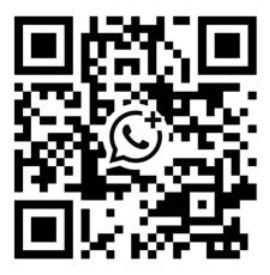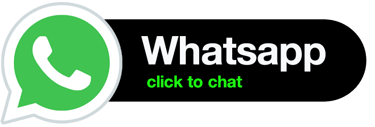How do you ensure that our products meet European Union regulations and standards?
Sourcing Expert Allen Zeng
9/29/20256 min read


I ensure products meet EU regulations by identifying applicable directives early, requiring accredited testing and certifications, maintaining complete technical files and Declarations of Conformity, enforcing supplier audits and ongoing QC, and managing labeling, documentation and traceability to prevent customs issues and recalls.
I'll break down the process step-by-step so you can apply it across sourcing, testing, documentation, audits and logistics — and avoid costly delays, rework or seizures.
How do you stay up-to-date with EU laws and regulations?
Problem: rules change fast; I get anxious when regs shift — so I made monitoring a daily habit.
I stay current by subscribing to official EU feeds, following notified bodies and industry associations, tracking harmonised standards, and keeping suppliers trained — turning legal updates into concrete supplier checklists and contract clauses to ensure ongoing compliance.
Staying up-to-date is not a one-off task — it’s an operational capability. I combine several practical layers: first, I subscribe to official EU channels (Commission updates, EU standards committees) and selected notified bodies so I see regulatory drafts and final texts as soon as they publish. Second, I follow specialised industry bodies and reputable testing labs (TÜV/SGS/Intertek) for interpretation, transitional periods and required test methods. Third, I map regulatory change to our supplier contracts and quality checkpoints: any new substance restriction, labelling change, or technical requirement triggers a supplier notification, a revision of the Product Technical File and, if needed, re-testing. Fourth, I maintain a short regulatory digest for internal and client use: one page per major product line with “what changed, effective date, required actions.” Fifth, I budget for change: annual re-testing slots and a supplier training quota so factories can adapt machinery, BOMs and labeling quickly. Practically, I also create “watchlists” per product group — for example, electronics (eco-design, RoHS), toys (Toy Safety Directive), cosmetics (REACH substances), and medical devices (MDR). For cross-border nuance, I track country-level guidance from key markets (Germany, France, Netherlands) because enforcement emphasis or language requirements sometimes vary. Finally, I use contractual leverage: when a major regulatory change appears, I require suppliers to present a mitigation plan within defined timelines — this keeps compliance practical, auditable and timely.
What steps do you take to ensure compliance before shipping products to the EU?
Problem: last-minute holds ruin sales; I hate surprises—so I lock compliance checkpoints into the project timeline.
Before shipping I run supplier qualification, accredited lab testing, compile the full technical file and EU DoC, audit factory QA systems, verify labels/manuals, and perform pre-shipment inspections and documentary checks to ensure customs acceptance.
My pre-shipment workflow has discrete, mandatory gates — nothing is shipped until every gate is green. Gate 1: Regulatory mapping and supplier selection. At project start I map all relevant EU directives/standards for the SKU and only shortlist suppliers with prior EU exports or demonstrable capability.
Sample testing and type-testing. I send representative samples to accredited labs (chemical, electrical, mechanical as applicable) and ensure test reports reference the exact model and firmware/batch.
Technical documentation. I compile the Technical File: design drawings, BOM with restricted substances statement, risk assessment, test reports, manufacturing drawings, user manuals in required languages, and the EU Declaration of Conformity (DoC).
Factory audit and controls. I audit the factory’s QMS (ISO 9001 if present), verify calibration records for test equipment, inspect incoming material controls and verify “golden sample” retention.
Production QC and lot verification. During production I apply in-line checks, record NCRs, and retain sample lots for re-test. Labeling & packaging checks. I verify CE/other marks are correctly applied, recycling symbols, importer details, warnings, and language requirements per target countries. Pre-shipment inspection and documentary audit. A final third-party inspection confirms conformity to specs and verifies Technical File completeness; I also run a documentary checklist that customs and market surveillance may request.
Logistics & customs prep. I ensure HS codes, customs paperwork, and any required importer obligations (Authorized Representative, if manufacturer outside EU) are in place. If any gate fails, shipment is paused until corrective actions and, if needed, batch re-testing are completed. This gate approach reduces risk and keeps clients confident.
How do you help us navigate different regulatory requirements across various EU countries?
Problem: “EU” isn’t always uniform; one country’s enforcement focus can differ—so I treat local nuance as part of project risk.
I map harmonised requirements first, then layer country-specific enforcement notes (language, eco-rules, local registers), use local agents/ARs where needed, and tailor documentation and labeling per destination to prevent enforcement gaps.
While many EU requirements are harmonised, enforcement and practical expectations vary by member state — and that matters. My approach has three pillars: harmonisation first, local nuance second, and practical mitigation third. Harmonisation: I always start with EU-level directives and harmonised standards because conformity to these provides a baseline (the “presumption of conformity”). Local nuance: some states impose additional practical expectations — for instance, specific language requirements for manuals and labels (France typically insists on French), stronger market surveillance activity in Germany, or differing priorities on environmental enforcement (e.g., packaging, WEEE implementation timelines). I maintain a country-matrix that records: required languages, commonly enforced standards, typical documentation requested during inspections, and local registration obligations (e.g., WEEE/REACH compliance registration portals or producer registers). Practical mitigation: where local registration or a local point of contact is required, I arrange an Authorized Representative (AR) or local importer set-up and ensure their details appear on labels and DoC as needed. For logistics, I coordinate with freight forwarders experienced in EU customs to pre-clear documentation and avoid AEO mismatches. I also run targeted “country-readiness checks” before a new market launch — small pilot shipments, labelling localized, and local agent feedback. Finally, for clients selling on marketplaces like Amazon EU, I align packaging and FBA documentation with marketplace requirements and often recommend local warehousing in a hub country after the initial compliance is proven. This practical, layered strategy turns regulatory complexity into predictable project tasks.
Can you provide a checklist to ensure compliance with all necessary standards?
Problem: checklists get long; I love checklists—so I built one that’s practical and action-oriented.
Yes — my checklist covers: regulation mapping, supplier qualification, accredited testing, technical file and DoC, factory audits, QC inspections, labeling/manuals, logistics documents, and post-market monitoring — a stepwise plan to clear customs and stay compliant.
Below is a comprehensive, stage-by-stage checklist you can apply to any SKU. Use it as a working document and attach evidence (reports/photos) to each checked item.
Pre-sourcing & Supplier Selection
Map applicable EU directives and harmonised standards for the product.
Confirm supplier’s EU export experience and request copies of prior EU test reports and client references.
Require supplier to provide BOM, material source list, and existing certificates.
Samples & Testing
Send representative samples to accredited labs (chemical, electrical, mechanical as applicable).
Verify test reports match the exact model/firmware and list test standards used.
Confirm re-test plan and acceptance criteria.
Technical File & Documentation
Compile Technical File: design drawings, BOM, risk assessment, test reports, instructions for use, maintenance info.
Draft EU Declaration of Conformity (DoC) and retain signed copy.
Prepare user manuals in required target languages and include safety warnings.
Factory Controls & Audits
Conduct factory audit: QMS, calibration records, incoming material controls, FAI (first article inspection) process.
Establish “golden sample” retention and traceability (lot/batch numbers).
Verify subcontractor lists and subcontract audit records.
Production Quality
Implement pre-production inspection, in-line checks and final random inspection.
Sample for lot re-testing and chemical sub-sampling where REACH/RoHS applies.
Record NCRs and CAPAs.
Labeling, Packaging & Marking
Confirm CE or other marks are applied correctly and only when applicable.
Add importer/authorized representative name and contact if required.
Check recycling, WEEE and disposal symbols; ensure country-specific language labels.
Customs & Logistics
Validate HS codes and product classification.
Prepare commercial invoice, packing list, test certificates, DoC and Technical File index for customs.
Arrange local AR or importer registration if manufacturer outside EU.
Post-Market & Monitoring
Register products on local producer registers if required (WEEE, packaging).
Set up a complaint/incident log and recall procedures.
Schedule periodic re-testing and supplier re-audits; update Technical File with any design changes.
Contracts & Legal
Include regulatory compliance clauses and right-to-audit in supplier contracts.
Define responsibility for rework/recall costs and timelines.
Ensure insurance and indemnity cover for product liability in EU.
Operational Tools
Maintain a one-page compliance checklist per SKU with links to evidence.
Keep an expiry tracker for certificates and test reports.
Budget annual re-tests and training for suppliers.
Apply this checklist as a gating workflow: no gate cleared = no shipment. Evidence folders (PDFs/photos/inspection reports) should be shareable with clients and customs on request. That concrete evidence — not promises — is what prevents holds and fines.
Conclusion
Compliance is a process: identify rules early, enforce testing and docs, audit suppliers, and keep continuous monitoring to protect your EU market access.
Connect Us
Great partnerships start with a simple hello.
Quick chat
Explore
© 2025. All rights reserved.










